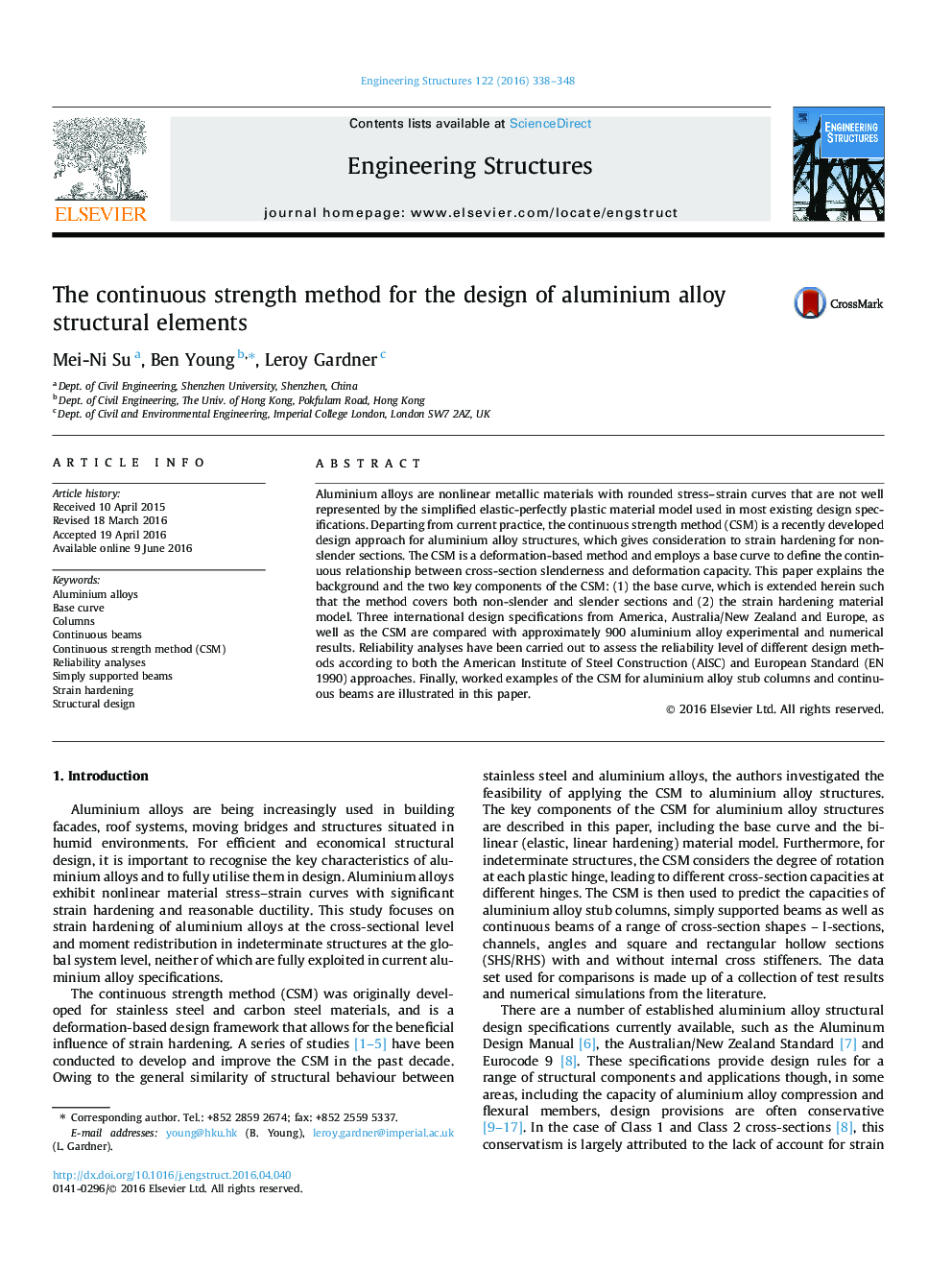| Article ID | Journal | Published Year | Pages | File Type |
|---|---|---|---|---|
| 6739918 | Engineering Structures | 2016 | 11 Pages |
Abstract
Aluminium alloys are nonlinear metallic materials with rounded stress-strain curves that are not well represented by the simplified elastic-perfectly plastic material model used in most existing design specifications. Departing from current practice, the continuous strength method (CSM) is a recently developed design approach for aluminium alloy structures, which gives consideration to strain hardening for non-slender sections. The CSM is a deformation-based method and employs a base curve to define the continuous relationship between cross-section slenderness and deformation capacity. This paper explains the background and the two key components of the CSM: (1) the base curve, which is extended herein such that the method covers both non-slender and slender sections and (2) the strain hardening material model. Three international design specifications from America, Australia/New Zealand and Europe, as well as the CSM are compared with approximately 900 aluminium alloy experimental and numerical results. Reliability analyses have been carried out to assess the reliability level of different design methods according to both the American Institute of Steel Construction (AISC) and European Standard (EN 1990) approaches. Finally, worked examples of the CSM for aluminium alloy stub columns and continuous beams are illustrated in this paper.
Keywords
Related Topics
Physical Sciences and Engineering
Earth and Planetary Sciences
Geotechnical Engineering and Engineering Geology
Authors
Mei-Ni Su, Ben Young, Leroy Gardner,
